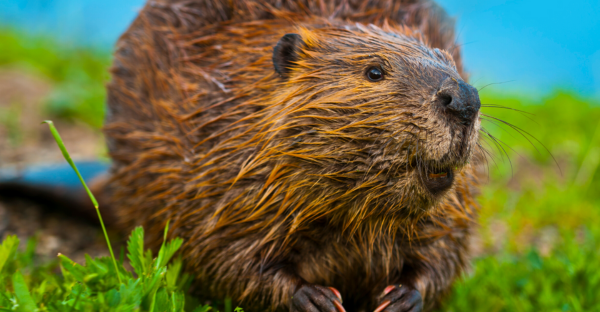
When we safeguard our rivers and waterways, we’re not just protecting them for people. An incredible diversity of wildlife reap the benefits of Wild & Scenic River designations!
Beavers
These ecosystem engineers (and Oregon’s state animal) provide a number of benefits to riparian environments such as creating and restoring habitat like wetlands, capturing excess sediment, recharging groundwater, and much more. It has been said that next to humans, beavers do more to shape their environment than any other animal.
The restoration of beavers (and beaver ponds and dams) can provide a solution to some of the mounting environmental challenges of our time. Beavers are an invaluable ally when it comes to mitigating severe drought and floods, improving the quality of fish habitat, and reversing biodiversity loss
Pacific Lamprey
Though not known as Oregon’s most adorable creature, this anadromous (meaning they migrate from freshwater to the ocean and back again) eel-like fish is tenacious, having lived through three ice ages and five mass extinctions!
Unfortunately, because of dams, reduced access to clean water and habitat, and climate change, this ancient fish is at risk and has been designated as a species of concern at both the state and federal levels. In large part through the leadership of the Pacific Northwest tribes, efforts are underway to help this species recover. Specific examples of their efforts include advocating for the removal of dams, relocation of lampreys to their historic range, installation of passage structures, and restoration of aquatic habitat.
Freshwater Mollusks
What’s extremely important for the health and vitality of freshwater ecosystems, culturally significant, and considered the most endangered group of animals in North America?
Freshwater mussels.
Despite their integral role in aquatic habitats, these mollusks are often undervalued. They provide a number of “environmental services” such as improving water quality by removing excess bacteria and nutrients through their filter-feeding. The movements of mussels also help stir oxygen and nutrients into the sediment and water. Finally, they help create and support suitable habitat and provide food for a number of fish.
Oregon is home to several native freshwater mollusks including Western Pearlshell, Floaters, Western Ridged Mussel, and Fingernail and Pea Clams.
Redband Trout
Redband trout are a subspecies of rainbow trout that have a distinct evolutionary history. This has allowed them to adapt to a variety of habitats and conditions that other trout would find unsuitable, like the arid landscapes of eastern Oregon. The presence of healthy riparian conditions, such as an abundance of woody debris, undercut banks and overhanging vegetation have been associated with robust redband trout populations.
Habitat degradation and fragmentation, plus the introduction of non-native species into Oregon’s waterways, has not only reduced their range and caused extirpations (local extinctions), but could also put their future in jeopardy.
Kingfisher
Often heard before seen, the Belted kingfisher is Oregon’s only kingfisher species. Unlike woodpeckers, which typically eat insects, this uniquely crested bird frequents open lakes, ponds, rivers or estuaries looking for a vantage point to catch fish. As such, having clean and healthy bodies of water (like those protected by the Wild & Scenic Rivers Act) are critical components for allowing the species to thrive in the state.

